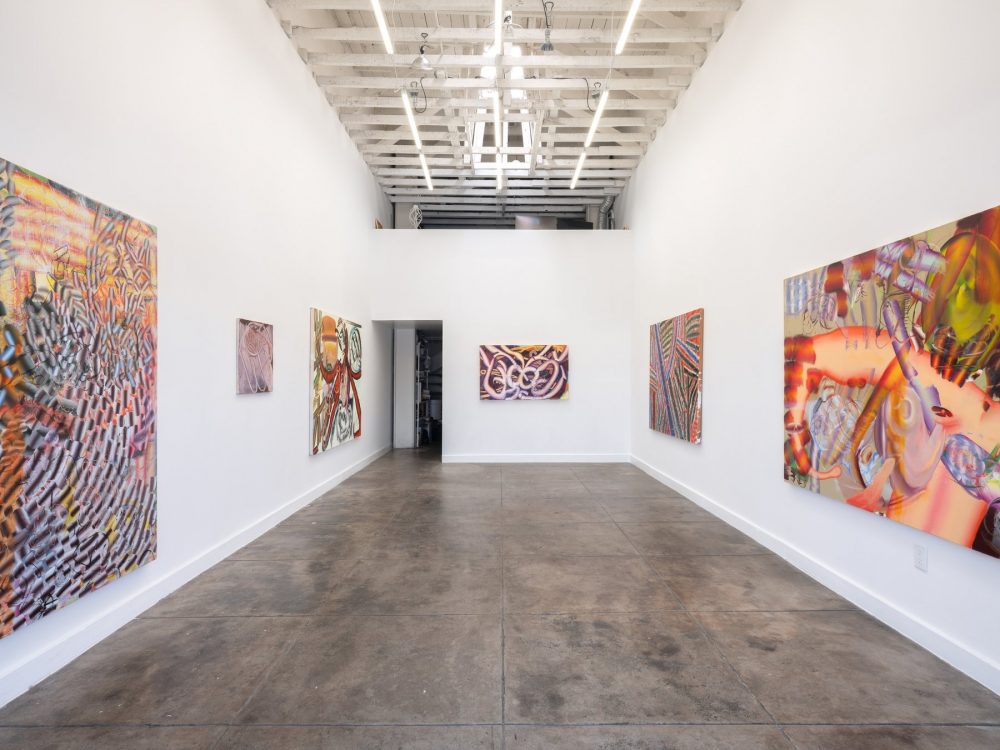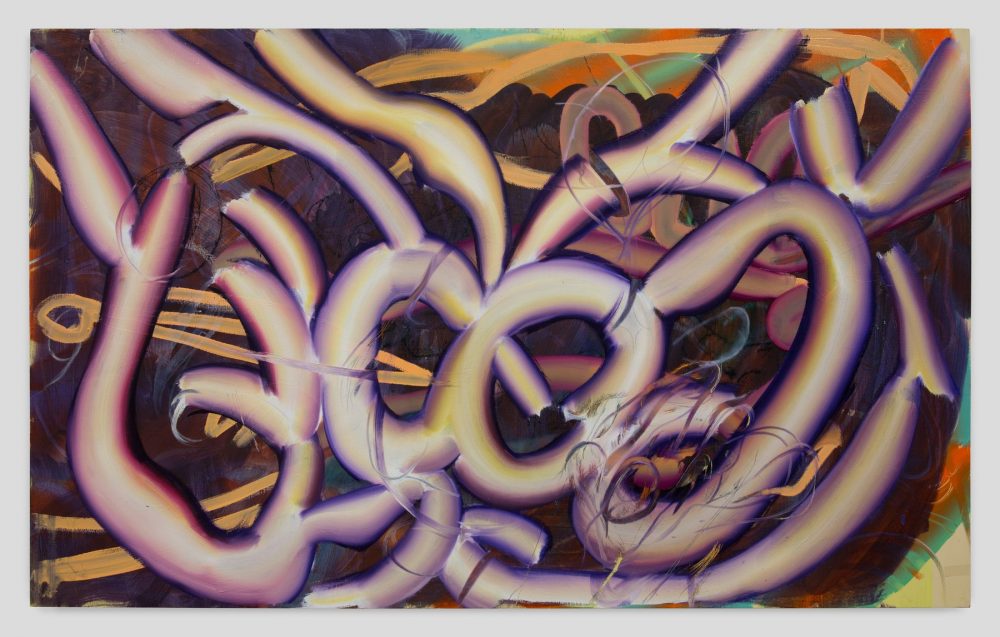At a time when abstract painting seems mired in self-reference, I itch for shows like “Clutches,” Lauren Quin’s second solo show in Los Angeles. Quin’s paintings are impressively complex. They feel like the orchestrated chaos of Albert Oehlen, but with an affinity for biological form and the slightest reference to digital image-making. Quin has a prowess for complicating images, enabling her to stir unusual reactions and offer insight on the painting process.
Oddly, Quin achieves so much with minimal means—her paintings rely heavily on a simple gradient motif. On its own, her version of this motif already has dual connotations of a light source and of form. But Quin often imbues it with a deeper biological connotation. The paintings sometimes feature larger forms, often flesh-toned and embryonic, and sketches that look like they’ve been scratched into the surface; ranging from animals and hands holding eggs, to patterns that look like feathers and scales. Quin’s interest in biology, and often her aesthetic, bring to mind Terry Winters’ sinuous/structural paintings from the eighties and nineties, but the effect is often more unsettling. There’s a certain black magic in tricking the mind to associate inert objects with biological liveliness, sort of like the quasi-limbs in Clutch for Dasypeltis. Thomas Nozkowski mastered a similar trick, although the two artists have very different aesthetics.

Gallery view courtesy of Real Pain Fine Arts
Quin’s painting is more complicated than tributes to biological form, though, partially because she subtly references the computer’s influence on image-making. Quin uses the gradient motif as you’d see it in a computer program, as if copied and pasted or drawn by a cursor. Having so many discrete elements also feels very digital, at least to this reviewer. Though there are comparisons to Laura Owens or Albert Oehlen’s “computer paintings,” Quin doesn’t quote these digital aspects so literally, and her work doesn’t depend on this interpretation. Her paintings also don’t succumb to being mere “images” rather than paintings.
Quin’s work has a lot to do painting-specific issues, and she subverts some of the traditional notions of painting process. For example, many of the longer gradient elements mimic the speed and movement of a gesture, but are actually made by the much slower process of creating a gradient (Clutch for The Penitent, for example). And they also read as form in addition to “marks.” Many of these gradient elements are also positioned such that they look like they’re about to connect, and form something larger, but remain detached—suspended in a process of becoming. Their texture feels finished, but their edges feel incomplete. And by using the gradient motif repeatedly, so much of her compositions (whether forms, movement, gestural patterns) are atomized into a litany of first steps, each its own slow process.

Lauren Quin, “Clutch for an Open Palm,” (2020). 32″ x 52,” oil on canvas. Courtesy of Real Pain Fine Arts.
I love this about Quin’s work because certain things about painting have become overly romanticized: the splash of paint, the mark as a record of the moment, the entire idea of a painting being a record of its own creation. Arguably, this human element is what makes a painting a painting, but at the current moment, it mostly feels stale and narcissistic. Quin finds a way to make it new. And in our changing world, Quin’s vision of biologically-imbibed and digitally-conscious abstraction gives hope for what painting can offer.


